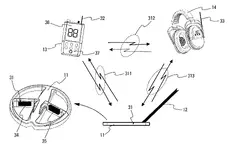vferrari
Silver Member
- Joined
- Jul 19, 2015
- Messages
- 4,910
- Reaction score
- 8,378
- Golden Thread
- 0
- Location
- Near Ground Zero for Insanity
- Detector(s) used
- XP Deus with HF/x35 Coils and Mi6 Pinpointer/ML Equinox 600/800/ML Tarsacci MDT 8000 GPX 4800/Garrett ATX/Fisher F75 DST/Tek G2+/Delta/Whites MXT/Nokta Simplex/Garrett Carrot
- Primary Interest:
- All Treasure Hunting
Regarding the headphones: They can send parametric data to the coil. They can operate the coil sans the remote. You cannot modify program parameters like you can with the remote but you can designate which preset/custom program the coil should use, so its pretty sophisticated.The ML patent basically covers the transmission of user parameters via wired/wireless. Wireless headphones would not infringe, providing the headphones don't transmit any parametric data to/from the detector. Ironically, the White's headphones do.
I haven't seen the new XP patent concerning the wireless pinpointer, but it sounds exactly like the one I filed at White's 4 or 5 years ago. No idea what became of the patent, but I thought it was one they shoulda kept. Unfortunately, White's has a long history of making bad decisions, and their refusal to stop doing this is why I left.
BTW, a new patent doesn't override an existing patent. You can add a new element or twist to something patented, but if your implementation still infringes the original patent, the new patent offers zero protection.
Separate topic: Shouldn't the defendant not the plaintiff be the one who gets to request jury vs. bench trial?





